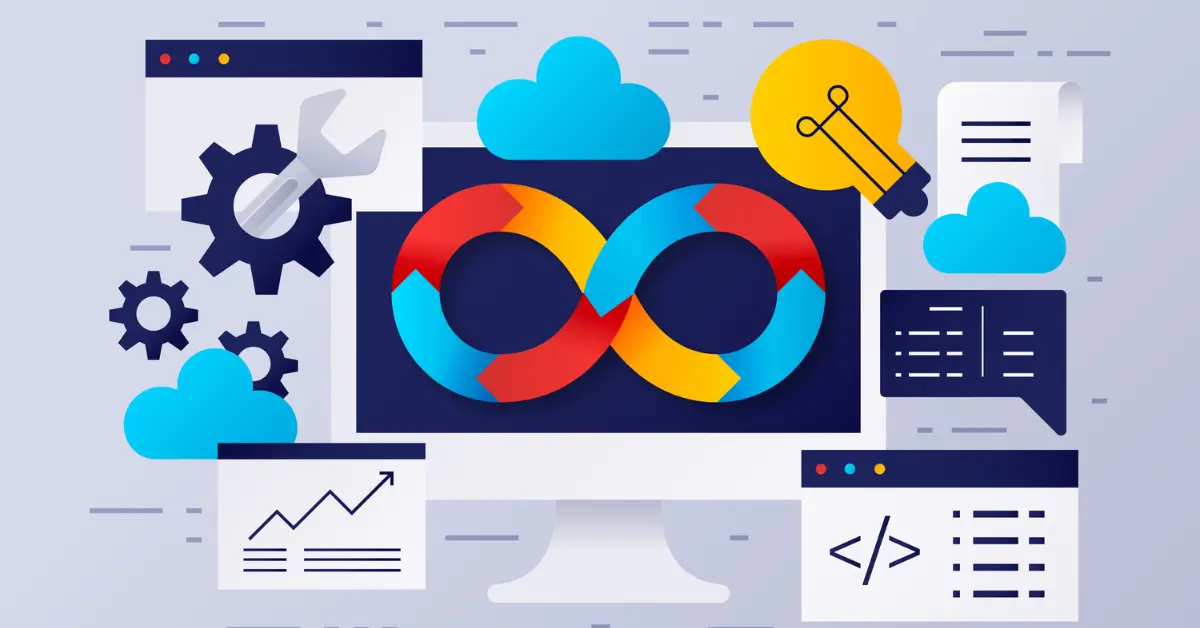Software failures aren’t just bugs—they’re business risks. A single glitch can damage brand reputation, erode customer trust, and cost millions in fixes. In 2022, a major airline’s booking system crash stranded thousands of passengers, highlighting how critical a robust QA process is. Whether you’re a startup or an enterprise, optimizing your Quality Assurance (QA) process is non-negotiable.
This guide dives into 7 practical, battle-tested strategies to refine your QA workflow, catch defects early, and ship reliable software. Let’s eliminate firefighting mode and build confidence in your releases.
1. Shift Left: Test Early, Test Often
The traditional “test-at-the-end” approach is a recipe for disaster. Shift-left testing integrates QA into every phase of development, from requirements gathering to coding. By testing early, teams identify issues when they’re cheaper and faster to fix.
Why Shift Left?
Shift-left testing is rooted in the Agile and DevOps philosophies, emphasizing collaboration and early defect detection. Imagine a scenario where a requirement ambiguity isn’t caught until the testing phase. By then, developers might have built an entire feature based on flawed assumptions, leading to costly rework. Shifting left means QA engineers work alongside developers and product managers from Day 1, clarifying requirements and validating designs before code is written.
Implementation Steps:
- Requirement Analysis: QA teams review user stories to ensure they’re testable and unambiguous. For example, a vague requirement like “The app should load quickly” becomes “The app homepage should load within 2 seconds on 4G networks.”
- Static Code Analysis: Tools like SonarQube or ESLint scan code for vulnerabilities, code smells, or compliance issues during development.
- Unit Testing: Developers write unit tests (using frameworks like JUnit or pytest) to validate individual components. For instance, testing a payment module’s error-handling logic before integrating it with the UI.
- Early Feedback Loops: Conduct sprint-level demo sessions where QA engineers validate prototypes or wireframes.
Real-World Impact:
A fintech startup reduced post-release bugs by 40% after adopting shift-left practices. By catching requirement mismatches during sprint planning, they avoided rebuilding entire features post-launch.
2. Automate Repetitive Tests (But Strategically)
Automation accelerates testing but isn’t a silver bullet. Focus on repetitive, high-impact scenarios like regression tests, smoke tests, or data validation.
Choosing What to Automate:
- ROI-Driven Selection: Automate tests that run frequently (e.g., login workflows) or cover critical paths (e.g., checkout processes).
- Avoid Fragile Tests: Steer clear of automating UI elements prone to changes (e.g., button IDs). Instead, use APIs for stable automation.
- Hybrid Approach: Combine automation with manual testing. For example, automate data validation but manually test user onboarding flows for UX nuances.
Tool Deep Dive:
- Selenium: Ideal for cross-browser testing. Create scripts to validate if a e-commerce site renders correctly on Chrome, Safari, and Firefox.
- Postman: Automate API endpoint checks. Schedule nightly tests to ensure endpoints return correct HTTP status codes and response bodies.
- Cucumber: Facilitate collaboration with non-technical stakeholders using Gherkin syntax (e.g., writing tests in plain English: “Given a user adds 3 items to the cart, When they proceed to checkout, Then the total updates correctly”).
Maintenance Tips:
- Version Control: Store automation scripts in repositories like GitHub to track changes.
- Regular Refactoring: Update scripts to align with UI/API changes. A retail company saved 15 hours/week by refactoring outdated Selenium scripts.
3. Prioritize Risk-Based Testing
Not all features are equally critical. Allocate QA resources based on risk to ensure critical paths are bulletproof.
Risk Assessment Framework:
- Identify Business Impact: Collaborate with stakeholders to rank features by user dependency. For example, a banking app’s fund transfer feature is high-risk; a profile picture uploader is low-risk.
- Likelihood of Failure: Use historical data to predict failure rates. If past releases had payment gateway issues, prioritize testing payment integrations.
- Risk Matrix: Plot features on a matrix (High/Medium/Low impact vs. High/Medium/Low probability). Focus on “High Impact + High Probability” areas first.
Case Study:
A healthcare software team avoided a compliance penalty by prioritizing HIPAA-related data encryption tests. They allocated 60% of their QA bandwidth to security testing, ensuring patient data remained protected.
4. Foster Collaboration Between Devs and QA
Silos between developers and QA teams lead to miscommunication and missed defects. Adopt a “Quality is Everyone’s Job” mindset.
Strategies for Collaboration:
- Shared Goals: Align KPIs for both teams. For example, track “Escaped Defects” (bugs found post-release) as a joint metric.
- Pair Testing: Developers and QA engineers test features together. A developer might explain the code logic, while the QA engineer designs edge cases.
- Bug Triage Meetings: Hold weekly sessions to prioritize and assign bugs. Use tools like Jira to tag issues by severity (e.g., “Critical,” “Blocker”).
Tools for Teamwork:
- Slack Channels: Create dedicated channels for real-time discussions (e.g., #qa-feedback).
- Confluence Docs: Maintain a shared repository for test cases and requirements.
Success Story:
A SaaS company reduced its bug resolution time by 30% after introducing “QA Office Hours,” where developers could consult testers during coding.
5. Leverage Real-User Data for Test Scenarios
Your test environment should mirror real-world usage. Analyze production data to identify common user journeys, edge cases, and performance bottlenecks.
Steps to Harness User Data:
- Analytics Integration: Use tools like Google Analytics or Mixpanel to track popular features. If 80% of users use search filters, prioritize testing search functionality.
- Create Personas: Build user personas based on demographics. For example, test how a non-tech-savvy user navigates your app versus a power user.
- Synthetic Monitoring: Simulate user behavior with tools like Selenium Grid or BrowserStack.
Example in Action:
An e-commerce platform discovered via heatmaps that users abandoned carts due to a poorly placed “Proceed to Checkout” button. They replicated this scenario in testing, redesigned the UI, and saw a 20% increase in conversions.
6. Integrate Continuous Testing into CI/CD Pipelines
Continuous Integration/Continuous Deployment (CI/CD) demands continuous testing. Automate tests to run with every code commit, ensuring immediate feedback.
Pipeline Integration Steps:
- Unit Tests: Run on every commit to validate code logic.
- Integration Tests: Trigger after merging branches to test component interactions.
- End-to-End (E2E) Tests: Execute nightly to validate user workflows.
Tools & Workflows:
- Jenkins: Set up pipelines to run tests in parallel. For example, run API tests on Server A and UI tests on Server B.
- GitLab CI: Use YAML configurations to define test stages.
- Flaky Test Management: Isolate inconsistent tests using Allure Reports to avoid pipeline bottlenecks.
ROI Example:
A media company reduced deployment time from 8 hours to 45 minutes by integrating automated regression tests into their CI/CD pipeline.
7. Invest in Performance and Security Testing
Functional testing alone isn’t enough. Modern QA must include performance, security, and compliance checks.
Performance Testing Deep Dive:
- Load Testing: Simulate 10,000 concurrent users with JMeter to measure response times.
- Stress Testing: Push systems beyond limits (e.g., 200% traffic spike) to identify breaking points.
- Optimization: Use New Relic to pinpoint slow database queries or memory leaks.
Security Testing Essentials:
- OWASP Top 10: Test for vulnerabilities like SQL injection or cross-site scripting (XSS).
- Penetration Testing: Hire ethical hackers to simulate attacks.
- Compliance Audits: Validate GDPR, PCI-DSS, or SOC2 adherence with tools like Vanta.
Case Study:
A fintech firm averted a data breach by conducting quarterly penetration tests, discovering an unsecured API endpoint during a routine check.
FAQs: Addressing Common QA Challenges
There’s no one-size-fits-all answer. Base your testing scope on risk, user impact, and regulatory requirements. Start with high-risk areas and iterate. For example, a banking app might require 90% test coverage for payment modules but only 50% for UI animations.
No. Automation handles repetitive tasks, but human testers excel at exploratory testing, UX evaluation, and creative problem-solving. A hybrid approach ensures coverage and adaptability.
Position QA as a cost-saving investment rather than an expense. Fixing a bug before launch (~$100) vs. after launch ($15K+ in downtime, PR damage, and fines) highlights its financial impact. Emphasize compliance risks (e.g., GDPR fines), customer trust (88% abandon apps after 2-3 failures), and ROI (50% fewer outages, 30% faster releases). Reinforce the message: “QA safeguards revenue, reputation, and long-term growth.”
Testing in isolation. Collaboration between dev, QA, and product teams is key to catching issues early. For instance, a missed requirement about timezone handling led to a global app crashing at midnight GMT—a flaw that could’ve been caught in a cross-functional workshop.
– Isolate flaky tests using tags.
– Investigate root causes (e.g., timing issues, environment inconsistencies).
– Replace unstable UI tests with API-based checks where possible.
Conclusion
Optimizing your QA process isn’t about perfection—it’s about proactive risk management. By shifting left, automating wisely, and fostering teamwork, you’ll reduce failures and build software that users trust. Start small: Pick one strategy from this list, implement it, and scale from there.
Your users (and your bottom line) will thank you.





